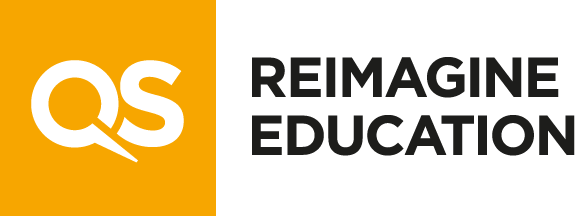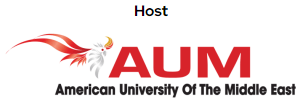COMPARATIVE JUDGMENT AND ADAPTIVE COMPARATIVE JUDGMENT: DO THEY HAVE A FUTURE IN PEER ASSESSMENT?
REIMAGINE NEWSLETTER: ISSUE 42
Sponsored Content
Students will face assessments for the entirety of their academic careers. From kindergarten to grad school, pupils can always expect to be put through their paces to test how much knowledge they’ve retained through their weeks, months, and even years of learning.
Assessment has several benefits for students of all ages. It can aid students in identifying weak points. It can also help both teachers and students alike identify exactly how effective utilized teaching strategies are.
Despite these well-studied benefits, there are a few flaws in traditional assessment tactics, and these flaws have inspired responses from the educational community. A greater number of teachers have attempted to review their own strategies and introduced assessments for their own teaching in the classroom, including strategies that make it easier for students to rate the learning process. While assessments for learning are important, there is a risk of them becoming excessively teacher-oriented. Many educators use assessment to determine how effective their specific tactics and methods are with students. While such insights can be an asset for the teacher in modifying their behaviors, they can obscure important inhibitions of student learning.
For true progress, this strategy must be amended to put the power of learning back in the hands of students. By doing so, one can ensure that they will be equipping students with the ability to study, evaluate, and progress by themselves for the rest of their academic careers.
Let’s consider the following guidelines in implementing truly student-centered learning strategy assessments:
Use the Right Form of Assessment
One imperative, when beginning to outline any learning assessment framework, is to identify the right form of test. Without a test that validly examines the content that a student neds to grasp, a student may not be able to accurately identify whether they’ve met specific goals.
The best way to do this is to use exams that students will likely face during their year of study. Put simply, for example, if one is teaching law students, the most important exams for them will be their LSATs and the bar exam. To help them prepare for these, one should consider using the exam tools found on relevant sites such as https://testmaxprep.com/.
Making sure the right exam is used has multiple benefits for students. In addition to giving them a clearer idea of the content itself, they will also be able to adapt themselves to specific testing strategies. As a result, they will be much better equipped to handle standardized testing practices.
Discuss Perceived Performance with Students
Once an assessment has been completed, talk to the students about their perceived performance. This is something one should do while the answers are still fresh in their minds. Some good questions to ask include:
• How did you feel about the exam?
• Why did you feel this way?
• What could you have done to improve your confidence in your performance?
This line of questioning allows students to move beyond an uncritical fixation on test difficulty. Instead, they are guided to explore their level of preparation, and how the answering format might have affected their performance. This, in turn, enables them to adopt better studying strategies post-assessment.
Identify Challenges and Brainstorm Solutions
Before returning the exam results, continue a dialogue with the students about what they found most challenging. Once again, it’s most fruitful – for measuring learning itself – to get them to identify specific issues. Don’t settle for general problem areas. One must train their students to come up with their own solutions to solve problems in the future.
Some questions that may stimulate this discussion include:
• What questions did you find most difficult and why?
• What information or knowledge would have made it easier for you to answer those questions?
• What can you do to avoid being confused by such questions in the future?
Students have a tendency to be short-sighted when attempting to determine both problem areas and their accompanying solutions. One should keep probing to help them establish the full scope of their challenges and how they can overcome them.
Go Through the Exam, But Keep the Focus on Self-Assessment
After these discussions, return the exam back to the students. During this stage, it’s important to keep the focus away from grades. After all, grades aren’t the purpose of such assessments. Rather, these exams are meant to aid students in figuring out their strengths, weaknesses, and what they need to do next to ensure they learn the necessary material.
This is where the self-assessment element of the strategy comes in. Have each student identify the main points they are struggling with. Keep in mind that these aren’t always learning-related. Numerous students may fail to perform due to issues related to attention, comprehension, and more.
Because of this, one must help students to identify patterns in their mistakes rather than just focus on the errors made. Have them examine their problem areas and determine if there is a link. This will allow them to discover what may be holding them back.
Ensure students document their main struggles, common error trends, and more. This will help them track improvement imperatives. Such information can also act as a measuring stick for progress with their future endeavors.
Encourage Goal Setting Based on Identified Factors
Finally, have the students create goals for themselves based on what they have learned from their performance. For best results, keep objectives as comprehensive as possible; step-by-step outlines or detailed plans, depending on the type of exam, may prove most useful.
A good way to help students do this independently is to have them consider their current learning position based on their exam performance. Then, have them think about where they would like to be by the time the next test is held. They will then be able to identify the exact steps they must take to make this happen.
These tactics are tried-and-tested ways of providing comprehensive learning strategy assessments for students. In utilizing these, one can equip their students with the tools they need to becoming independent and confident learners – not only for a course, but for the rest of their academic career.
About the Author
This article was contributed by Chathurika Kahavita, External Outreach Manager at TestMaxPrep.

